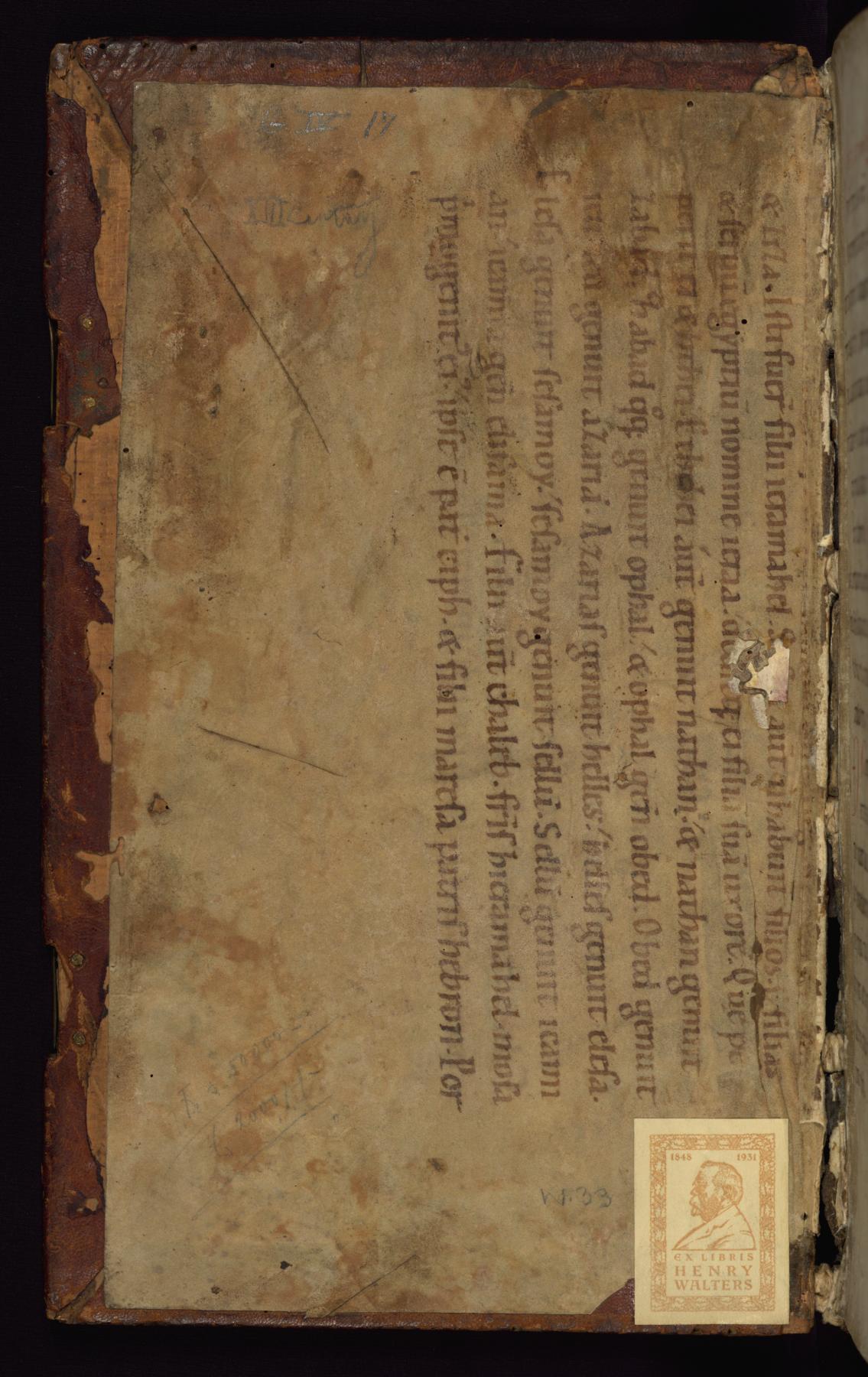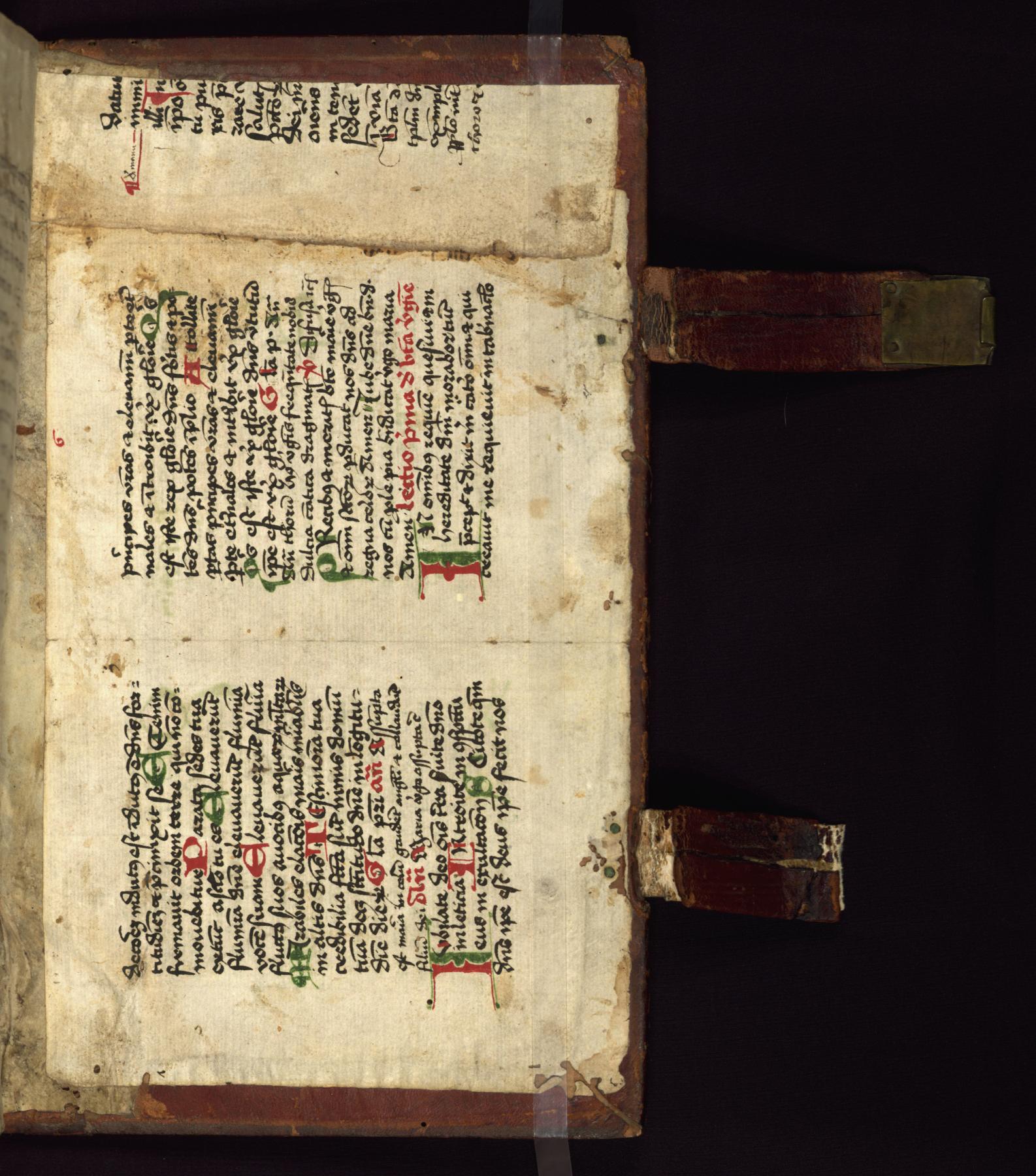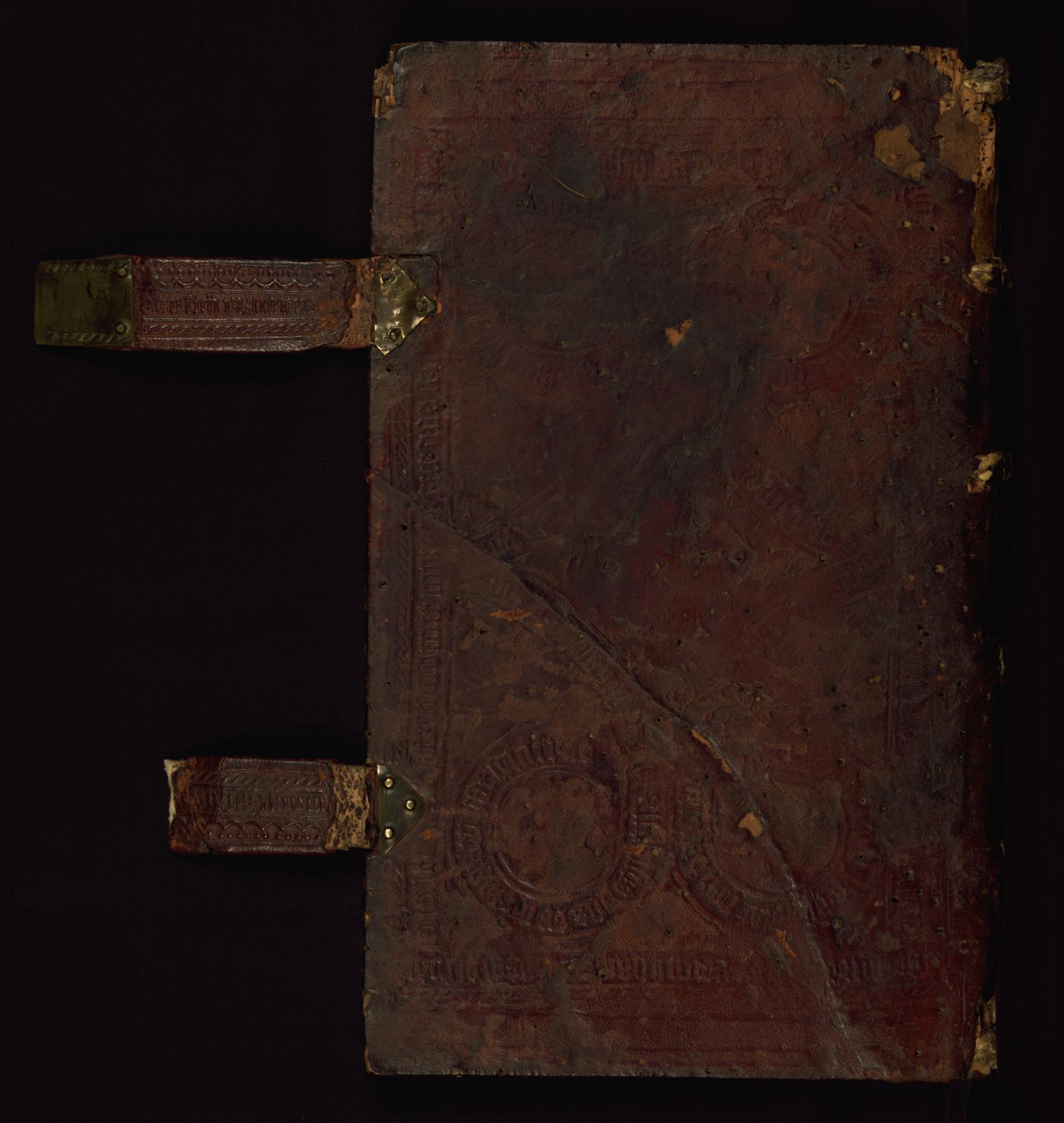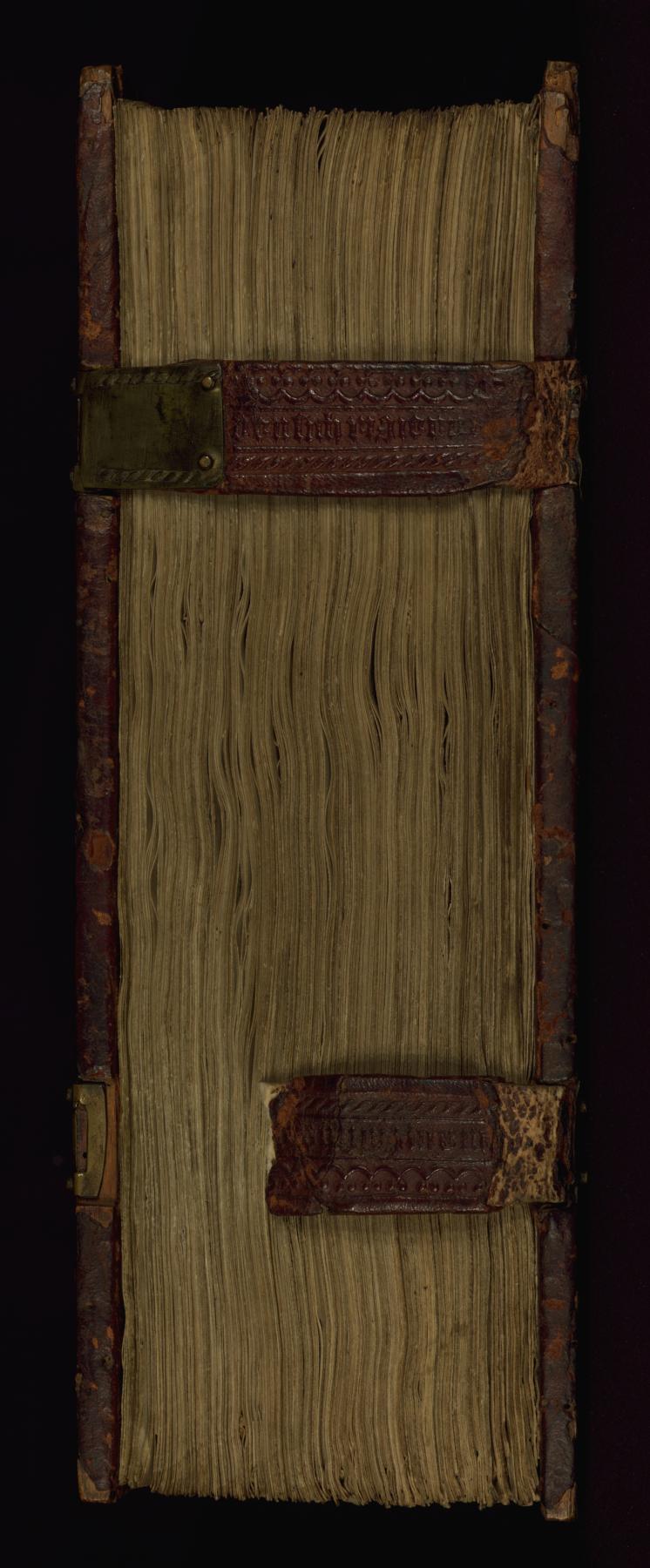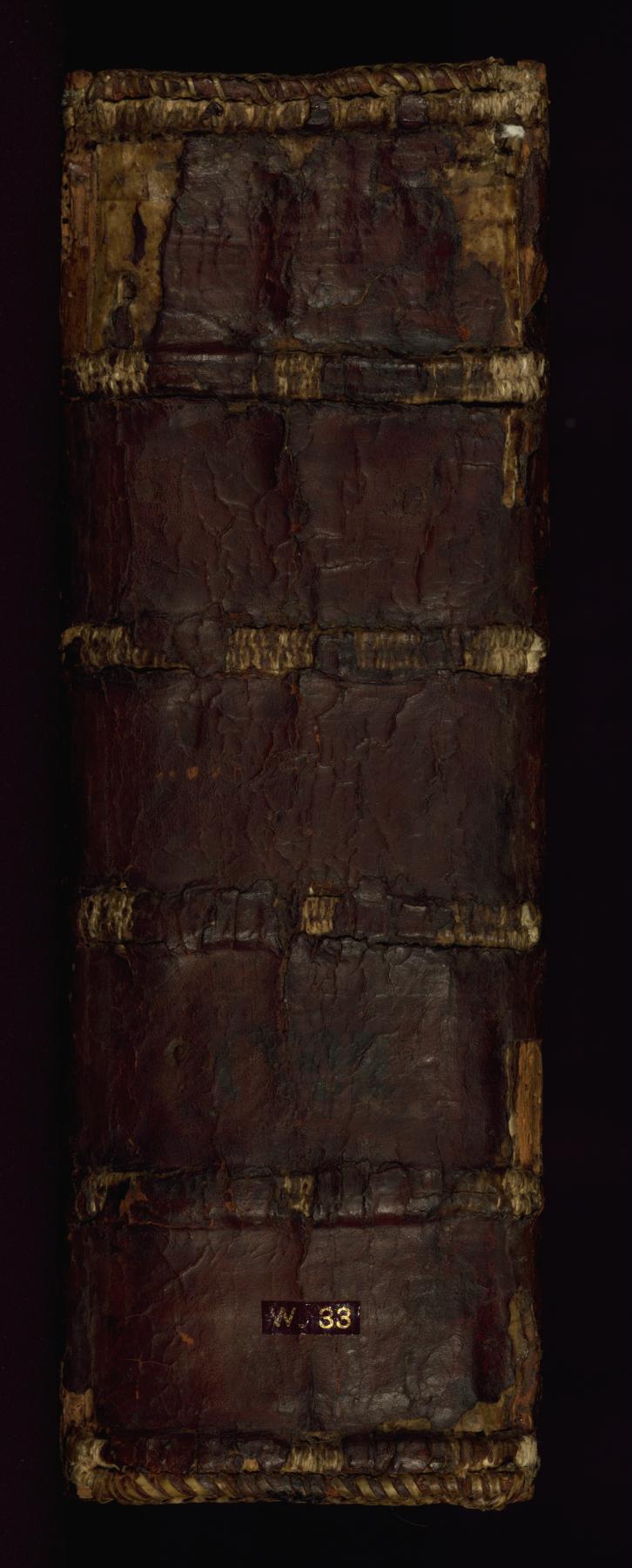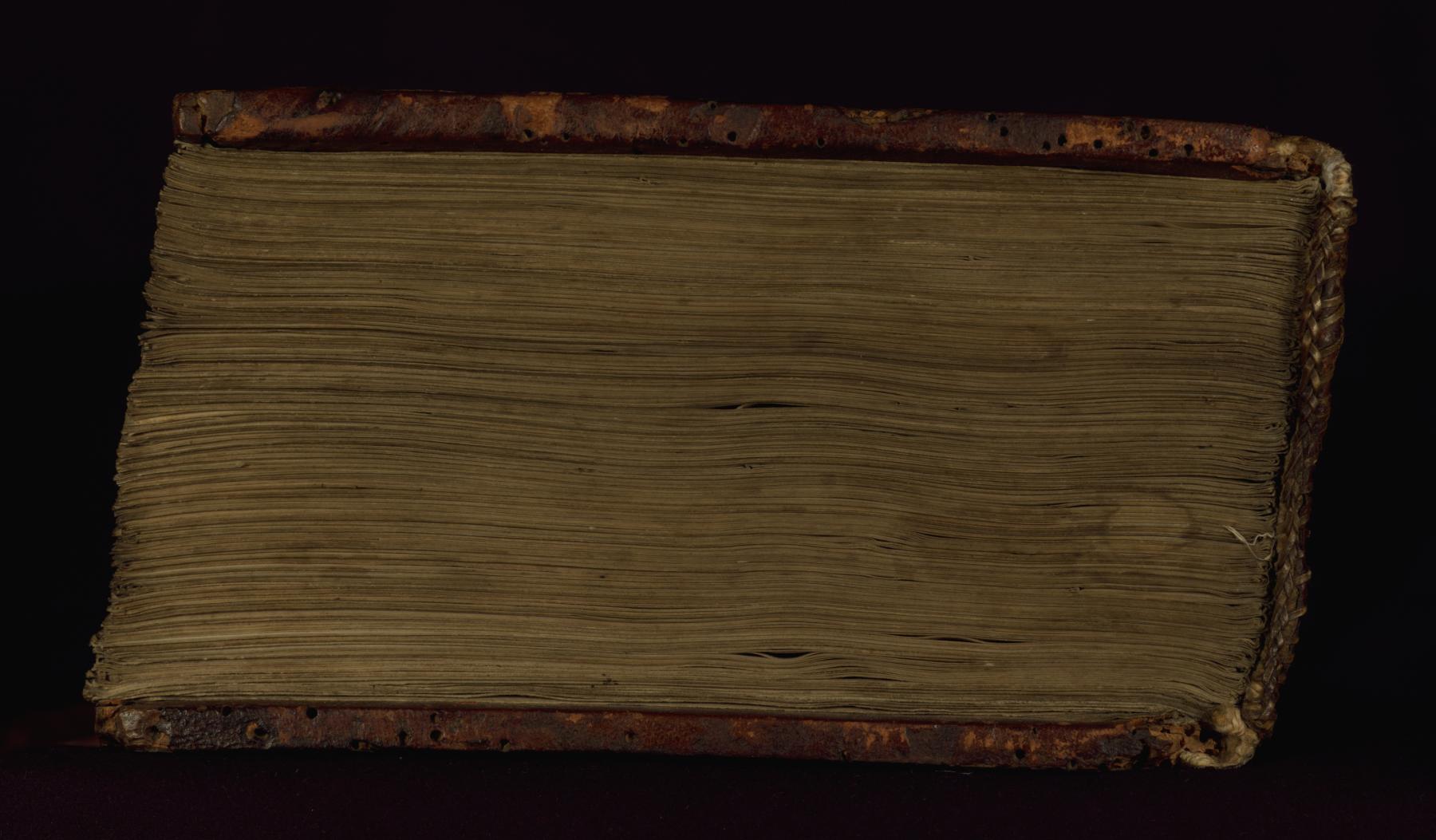Binding from Melk Missal
(Medieval Europe , Manuscripts and Rare Books)
Binding is non-original. Austrian fifteenth-century beech boards covered with brown calfskin stamped with inscribed scrolls containing German poetic inscriptions; Clarkson notes in the Walters file that letters are raised and therefore cannot have been directly impressed with movable type as suggested by Miner and Goldschmidt; much restored; pastedowns of manuscript waste: front pastedown in twelfth-century Gothic bookhand (1 Chronicles, 2:33-43), back pastedown in fifteenth-century German cursive hybrid bookhand (breviary).
Provenance
Provenance (from the French provenir, 'to come from/forth') is the chronology of the ownership, custody, or location of a historical object. Learn more about provenance at the Walters.
Benedictine abbey of Melk or Seitenstetten [patron saints of Melk - Peter and Paul, and Cholomannus (fol. 212r), liturgy for use in Melk diocese] [made for the abbey]; [textual additions and corrections in 13th-15th century hands]; [rear pastedown is 15th-century breviary folio]; Seitenstetten Stiftsbibliothek, 1913 [date and mode of acquisition unknown] [Ms. 127, described in 1913 Swarzenski publication]; Jacques Rosenthal [bookplate on inside of upper binding] [cat. 90, 1928 no. 167]; Henry Walters, Baltimore [date and mode of acquisition unknown]; Walters Art Museum, 1931, by bequest.
Geographies
Austria, Melk (Place of Origin)
Measurements
Page H: 10 7/16 x W: 6 11/16 in. (26.5 x 17 cm)
Credit Line
Acquired by Henry Walters
Location in Museum
Not on view
Accession Number
In libraries, galleries, museums, and archives, an accession number is a unique identifier assigned to each object in the collection.
In libraries, galleries, museums, and archives, an accession number is a unique identifier assigned to each object in the collection.
W.33.binding


